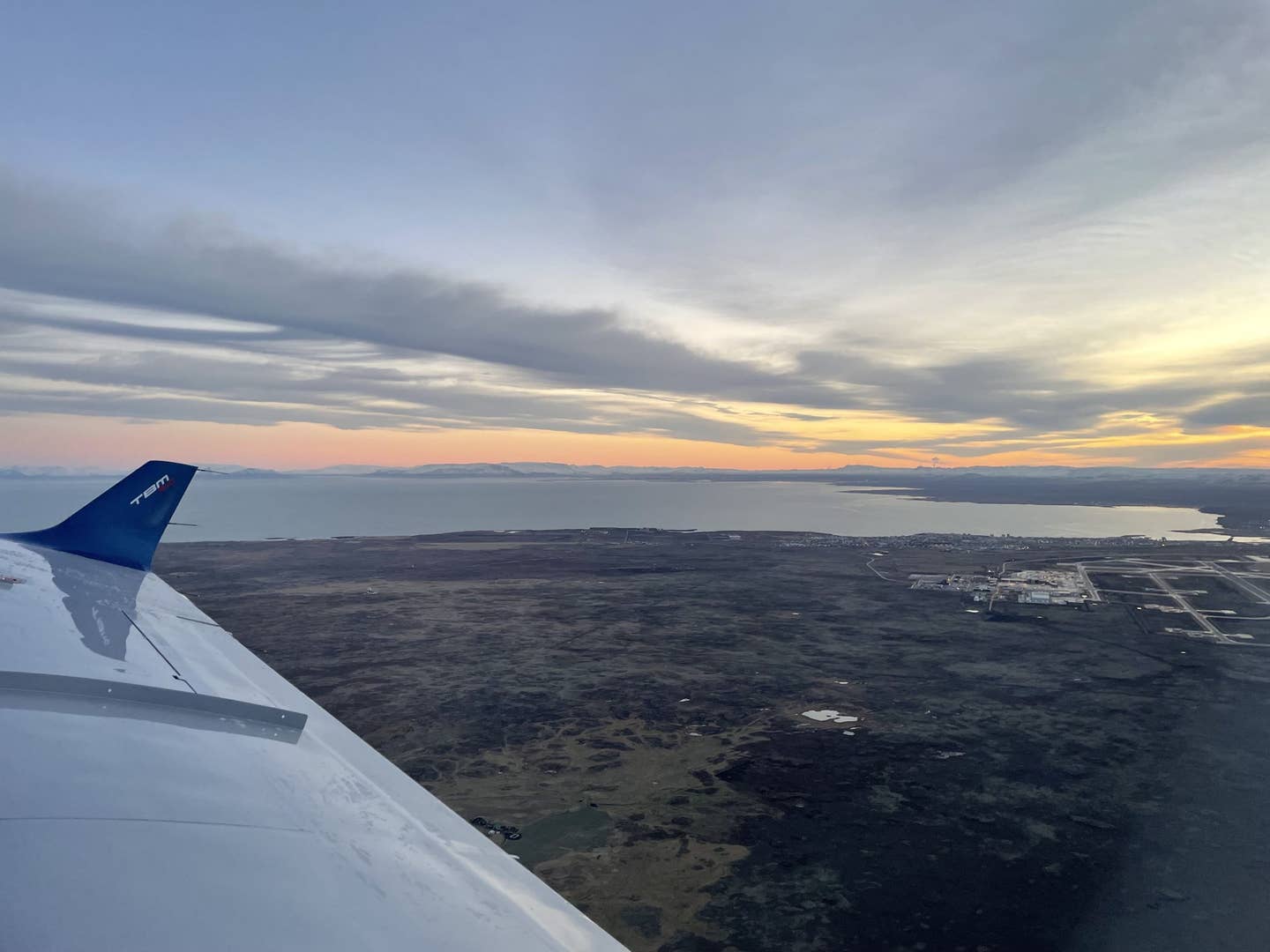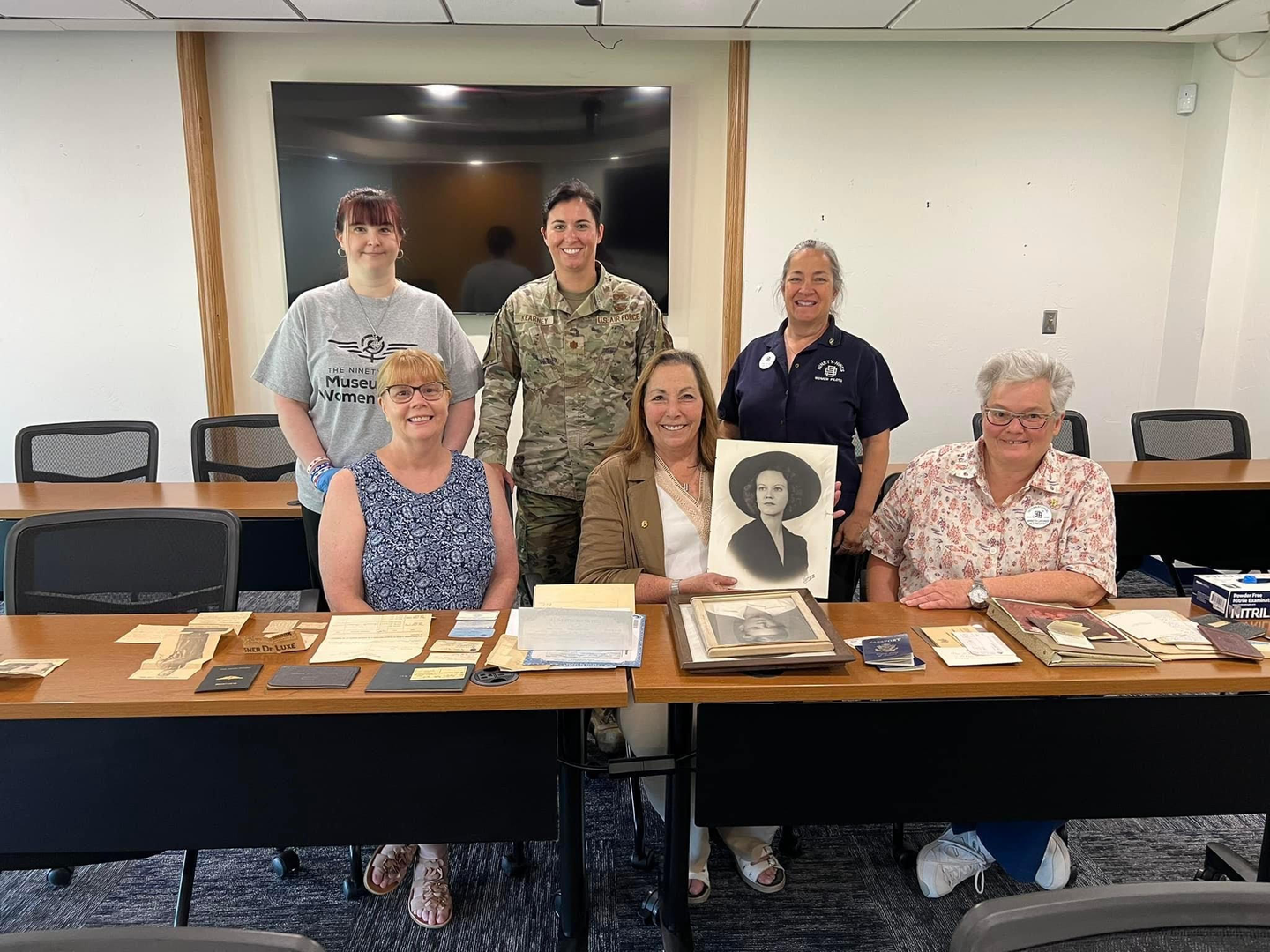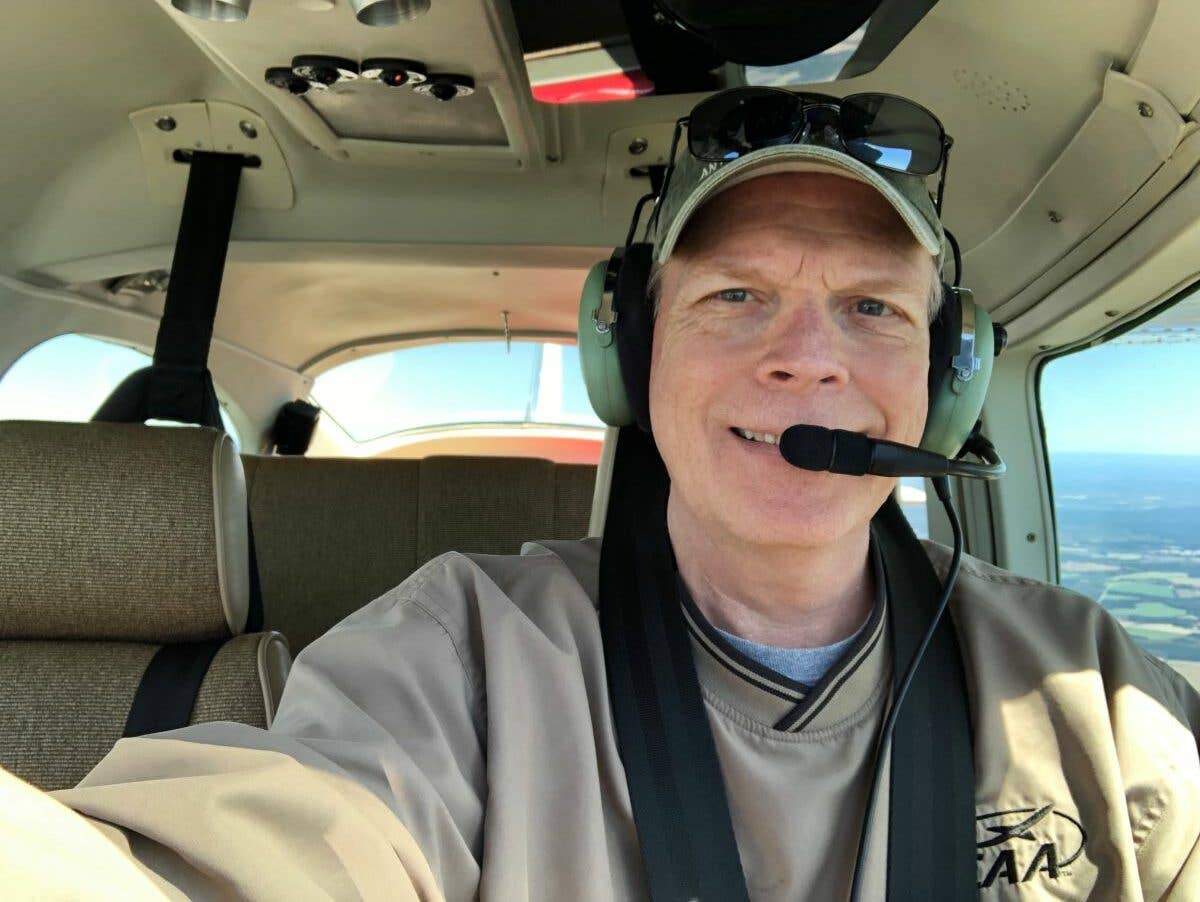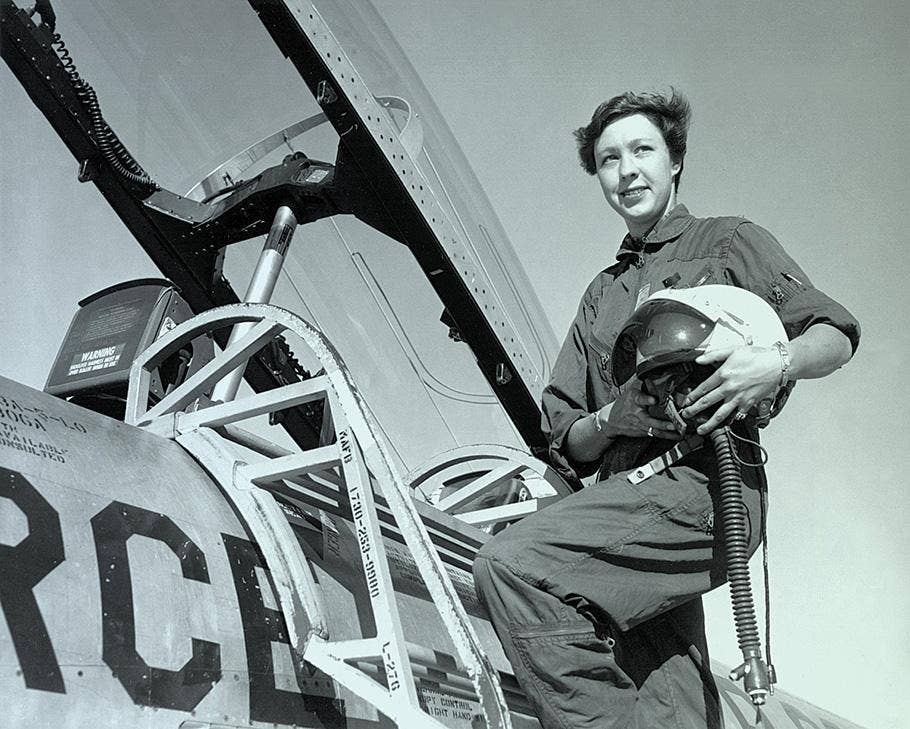View From Above: Preparations Crucial for Such a Big Trip
What does a pilot need to pack before crossing the North Atlantic? Editor-in-Chief Julie Boatman found out.

Taking off out of the sunrise over Iceland’s Keflavik airport. Credit: Julie Boatman
“You want to dress in layers.”
Margrit Waltz made the point clearly though we were speaking through FaceTime between Maryland and Germany, where she was staying before our trip.
Waltz has made the transatlantic crossing by light aircraft literally hundreds of times—and more than 200 of those in various TBM models—so I paid close attention.
You don’t want to show up on the ramp at Greenland in running shoes, she went on. It’s well below freezing even this early in the season. The cold will soak up through your soles.
Thus began my packing plan—over the course of two weeks—for a ferry flight that would take us from France to Connecticut in a new TBM 940 in mid-November.
I began laying out my kit in the spare bedroom, with the door closed. You have to hide these kinds of things from the dogs or they will mutiny. Or the cats will have their say in other ways.
The Layering Game
As a person who has run—“run” being a loose term—marathons in Colorado in winter, the layering concept to combat the cold that she was talking about was familiar to me. A ferry flight in an airplane with the kind of range and speed as the turboprop 940 takes you from reasonable climes (southwestern France, say) to unreasonable ones (Iqaluit, Nunavut, which is frozen solid for much of the year) in a remarkably short period of time.
So, you can’t dress too warmly, or you will sweat yourself out on the flight deck. With heated seats, the TBM provides a cosy shelter while en route, for sure. But stepping out onto the ramp without the right gloves, and scarf, and hat…etcetera—that would not work either.
I stuffed the bottom of the big Army-green duffel I’d last taken to camp as a college student with running tights, fleece pants, and base-layer turtlenecks.
Overnight in Strange Places
The second tip I heard loud and clear was from another expert ferry pilot pal, Sarah Rovner, who has written about ferrying light aircraft in winter for FLYING.
Her advice? You never know where you might end up for the night. Or for three days while a gale blows through or the freezing fog lingers long. And some of the places that present safe harbor to airplanes may be less-than-generous in their culinary offerings.
Spaghetti with ketchup for days, for example. Let’s just say that does not appeal.
“But you can always find hot water,” Rovner told me. She takes along a range of backpacker’s pantry meals—the kind of freeze-dried food that’s lightweight and stowable, and a lot easier on the palate. At least you know what you’re getting.
Combined with the en route snacks I normally take on long cross-country flights—like jerky, trail mix, dried fruit, and TicTacs—my food stores took up another layer in the canvas duffel.
Pilot-y Stuff
When the folks at Daher called me to say we were a “go,” I asked for a copy of the pilot’s operating handbook to study. I’d have lots of time to familiarize myself further once I was sitting in the right seat, but there was flight planning to think about—just for my own benefit, as Waltz handled the official flight plan as PIC—and a lot of systems to ponder through.
So, I studied the POH. Almost all 900-plus pages of it.
I also pulled out survival items such as a CO detector, space blanket, and my lucky signal mirror. I call it “lucky” because I have never had to use it.
So far, so good!
I spent many nights before departing for France thinking, overthinking, analyzing, re-analyzing, and downright dreaming about the various scenarios we could find ourselves in should something go wrong. A big part of the preparation is mental, and coming to terms with the objective hazards of the trip.
By objective hazards, I mean the ones over which you have little or no control, such as catastrophic engine failure, systems emergencies that are only solved by landing (and not solved well by ditching), unforecast weather, and sudden illness.
But ferry pilots deal with these realities—mitigating all the hazards they can, and accepting the psychological challenge posed by those that remain.
“I’m an optimist,” said Rovner in our conversation. “If you’re not, you’re sunk before you start.”
As it turns out, that was by far the toughest part of my preflight preparation.

Sign-up for newsletters & special offers!
Get the latest FLYING stories & special offers delivered directly to your inbox






